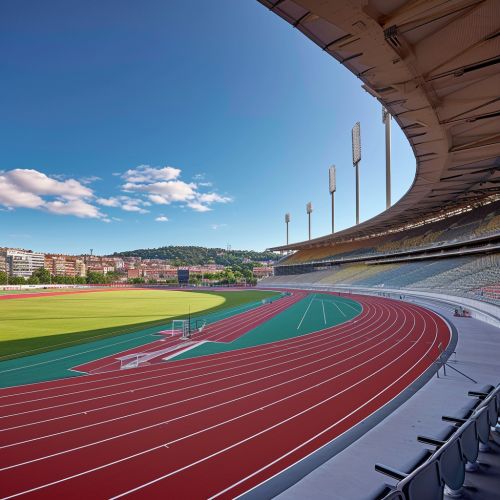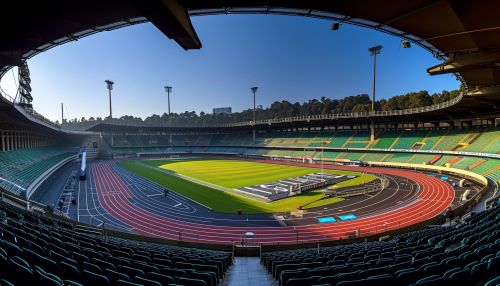Estadi Olímpic Lluís Companys
History
The Estadi Olímpic Lluís Companys, originally known as the Estadi Olímpic de Montjuïc, is a stadium located in Barcelona, Spain. It was built in 1927 for the 1929 International Exposition in the city (Expo 1929), and was later renamed in honor of the former President of Catalonia, Lluís Companys. The stadium has a rich history, having been the main venue for the 1992 Summer Olympics (1992 Olympics) and the 1955 Mediterranean Games (Mediterranean Games).


Design and Construction
The Estadi Olímpic Lluís Companys was designed by architect Pere Domènech i Roura, who was also responsible for several other notable structures in Barcelona. The stadium was constructed on the Montjuïc hill, offering stunning views of the city. It was built to accommodate up to 60,000 spectators, making it one of the largest stadiums in Spain at the time. The design of the stadium is notable for its simplicity and functionality, with a focus on providing optimal viewing experiences for all spectators.
Major Events
The Estadi Olímpic Lluís Companys has been the venue for numerous major sporting events. In addition to the 1992 Olympics and the Mediterranean Games, it has also hosted the World Athletics Championships (Athletics Championships) in 2010 and the European Athletics Championships (European Championships) in 2010. The stadium has also been used for various concerts and cultural events, showcasing its versatility as a venue.
Renovations
The stadium underwent major renovations in preparation for the 1992 Olympics. The renovations were led by Italian architect Vittorio Gregotti and Catalan architect Frederic Correa. The renovations included the addition of a roof over the main stand, the installation of new seating, and improvements to the facilities. The capacity of the stadium was also increased to 70,000 for the Olympics.
Current Use
Today, the Estadi Olímpic Lluís Companys continues to be used for various sporting and cultural events. It is also the home ground of RCD Espanyol, a football club based in Barcelona (RCD Espanyol). The stadium is also open to the public for tours, offering visitors the chance to explore the historic venue and learn about its rich history.
